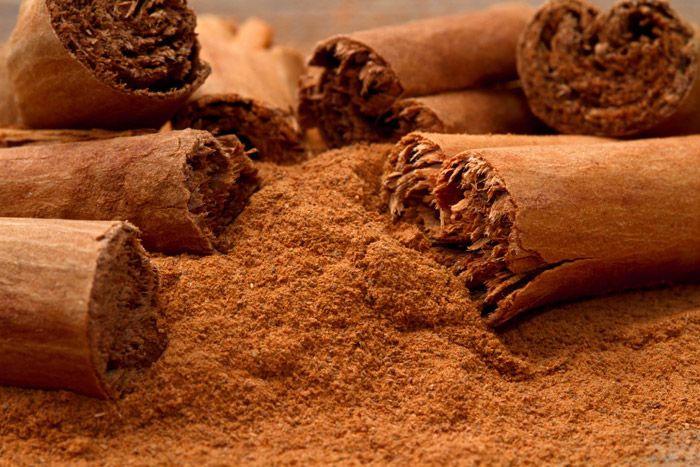Cooking with spices is an exciting, economical, and healthy way to spruce up basic student dishes. However, meandering down the spice isle can be daunting for even the most advanced cook. Here are some common spices from a variety of global cuisines to help bring flavourful boosts of nutrition to even the simplest meals.
Cinnamon
Cinnamon is cultivated from the brown bark of the cinnamon tree and comes in two varieties, Chinese and Ceylon. When the bark is harvested, it rolls into the tubular form known as cinnamon sticks, found in most grocery stores. Cinnamon has a long history, and was even used in ancient Egypt as an embalming agent. Later, it became one of the main commodities of trade between Europe and Asia, and grew in popularity in European cuisine during the Early Middle Ages. Cinnamon has many health benefits, including its antifungal and antibacterial properties, its ability to stabilize blood sugar, and its potential to boost cognitive function and memory.
Try this:
– A rice pilaf with roasted veggies, raisins, and chicken for a Middle Eastern-inspired dinner.
– Add a few dashes on whole grain toast with honey and butter.
– Sprinkle it in your morning coffee or tea for added flavour.
Basil
Basil is harvested from the leaves of the basil plant, and is a highly fragrant and versatile plant. There are 60 varieties, the most common being sweet basil, which is found in Italian cuisine, and Thai and lemon basil, which are found in Southeast Asian cuisines. Basil is revered in many different cultures around the world; in India, it is a symbol of hospitality, while in Italy, it symbolizes love. Basil is high in Vitamin K, has anti-inflammatory effects, and contains flavonoids, which serve as protection from radiation.
Try this:
– Make an easy pasta dish by topping cooked pasta with fresh chopped sweet basil, olive oil, and Parmesan cheese.
– Simmer diced tomatoes with dried basil, mushrooms, and zucchini for an easy tomato sauce.
– Try a salad with diced fresh basil leaves, spinach, purple onion, and mozzarella.
Curry powder
Curry powder is a fragrant spice mix, which varies in composition—reflecting South Asian cuisine. Most curry powder recipes include coriander, turmeric, cumin, fenugreek, and chilli peppers in their blends. Additional ingredients like garlic, ginger, and fennel seed may be included. Curry powder is well established in the dishes of the Indian peninsula. The spices in curry powder have a range of amazing health benefits. Turmeric, for example, has potent anti-inflammatory benefits and lowers cholesterol, while coriander lowers blood sugar and controls free radicals.
Try this:
– Create a curry by simmering rice, coconut milk, chopped vegetables, and chickpeas.
– Make a homemade salad dressing with olive oil, apple cider vinegar, diced garlic, and curry power.
– Add it in a stew with lentils, potatoes, sautéed onion, and garlic.
Chili peppers
Chili peppers originate from Central and South America. They were introduced to the rest of the world in the 15th and 16th centuries, quickly becoming staples in many styles of cuisine. There are as many varieties of chili peppers as there are recipes to incorporate them in, making them versatile in savoury cooking. The spice is made by grinding dried peppers; some common types of dried pepper include habaneros, chipotle, and cayenne. Chili peppers are renowned for their health benefits in many cultures, helping fight inflammation and aiding weight loss. They also boost immunity and clear congestion, making them ideal for flu season.
Try this:
– Sauté leafy greens like kale with cayenne and garlic.
– Make a warming chili with diced tomatoes, black beans, chickpeas, corn, rice, and cayenne.
– Squeeze some lemon juice and cayenne pepper into a glass of water in the morning for a detoxifying kick.









